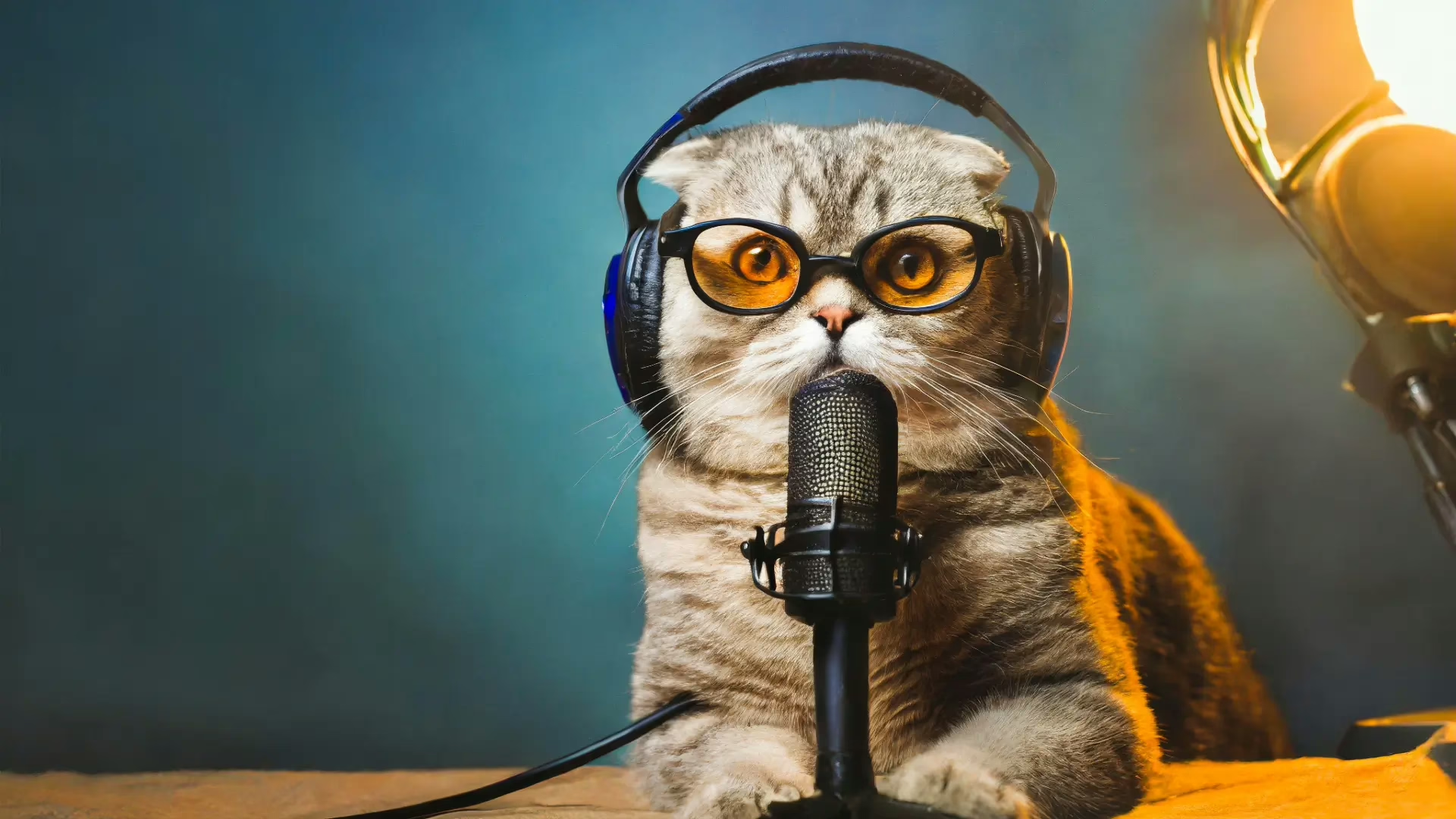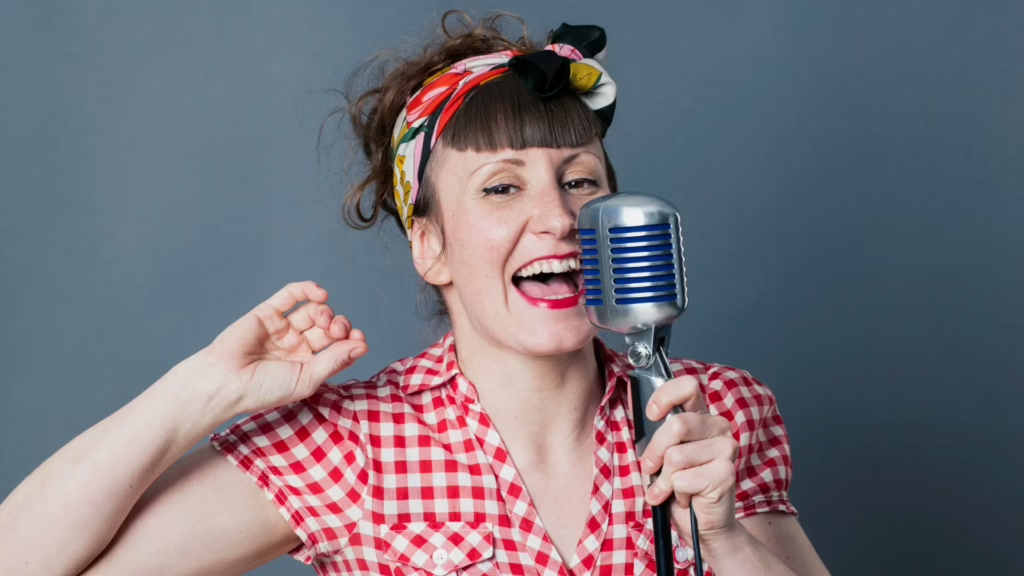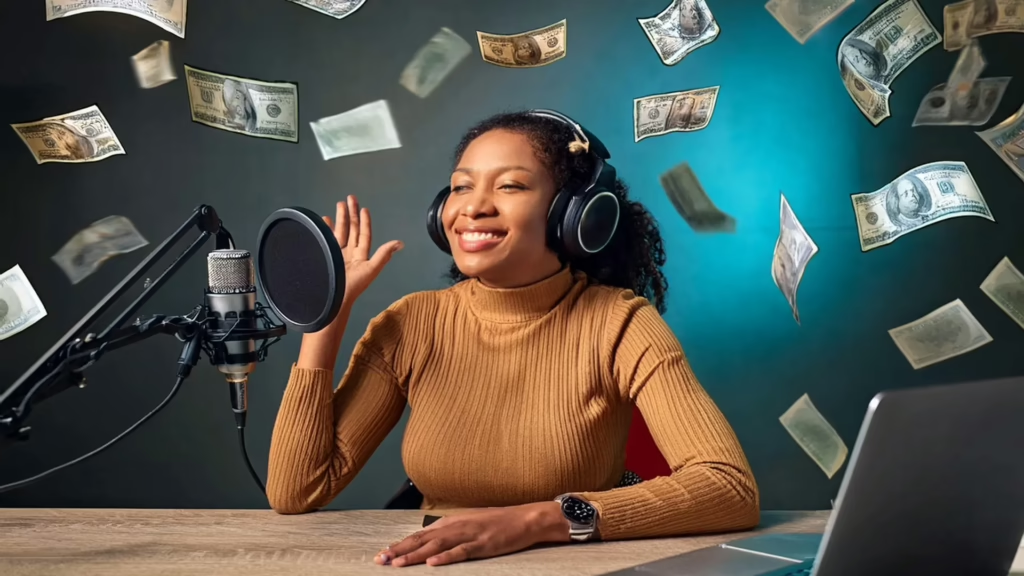There’s more to starting a successful podcast than grabbing the nearest microphone and waxing poetic. With over 4 million podcasts available, competition is fierce. It’s easy to get lost in the crowd without a well-executed strategy.
Avoiding pod fade – that burnout that happens when you realize you’re in over your head – means knowing your audience and niching down your expertise to establish yourself as an authority in your industry. Knowing how to give people what they want is the best recipe for podcasting success.
Just ask Neal Veglio.
The creative genius behind Podknows Podcasting, Veglio shares his expertise with individuals and brands eager to cash in on the podcasting craze. His long and storied history in radio broadcasting helped him develop a keen eye – and ear – for the kind of adult conversations that make podcasting so popular.
His full-service podcast consulting business has helped launch over 50 new podcasts since 2020. It’s closer to 250 if you include his entire career in broadcasting. Neal knows his stuff and has graciously agreed to share his knowledge in our handy guide on podcasting and whether it’s right for you.
The evolution of podcasting
The story of podcasting began well before the term was coined. The technical foundations were laid in the late 1990s when RSS (Really Simple Syndication) was developed. RSS allows content distribution and updates. However, the true precursor to podcasting emerged in 2000, when RSS pioneer Dave Winer added the ability to enclose media files within RSS feeds.
In 2003, former MTV VJ Adam Curry and Dave Winer created what many consider the first podcast software, “iPodder,” which allowed users to download radio broadcasts to their iPods. But it wasn’t until 2004 that journalist Ben Hammersley, writing for The Guardian, coined the term podcasting – a portmanteau of iPod and broadcasting – giving this emerging medium its name.
Major podcasting milestones
The first major milestone came in 2005 when Apple officially added podcast support to iTunes, creating the first centralized directory and making podcasts accessible to millions of iPod users. That same year, Libsyn (Liberated Syndication) launched as the first dedicated podcast hosting service, solving the bandwidth problem that had limited early podcasters.
For nearly a decade, podcasting grew steadily but remained somewhat niche. The medium attracted early adopters, tech enthusiasts, and independent creators, but hadn’t yet captured mainstream attention. Around 2013, approximately 12% of Americans reported listening to podcasts monthly – a dedicated but limited audience.
Then came 2014, when “Serial” changed everything. This true-crime investigation from the creators of “This American Life” became a cultural phenomenon, reaching over 40 million downloads in its first season and introducing podcasting to millions of new listeners. “Serial” demonstrated podcasting’s unique power for in-depth storytelling and showed that the medium could create genuine cultural moments.
Podcasting by the numbers
This watershed moment triggered what industry insiders often call the podcast renaissance. Between 2014 and 2018, monthly podcast listenership in the U.S. nearly doubled from 15% to 26% of Americans. Major media companies took notice, with networks like NPR, Gimlet Media, Wondery, and later Spotify making significant investments in original podcast content.
The growth accelerated further during the COVID-19 pandemic, as people sought both information and entertainment while stuck at home. By 2020, podcast listenership had climbed to 37% of Americans monthly, with the number of available podcasts exceeding one million.
Today, 62% of the U.S. population listens to podcasts monthly. The average podcast listener consumes eight shows weekly. Roughly 43% of those stick around for the entire episode.
Other noteworthy podcast data:
- There are approximately 5.2 million podcasts, with 70 million episodes available.
- About 38% of podcasts are actively publishing new episodes.
- The average podcast length is 42 minutes.
- The global podcasting market reached $5.4 billion in 2024, with the U.S. accounting for $3.8 billion.
- Spotify has emerged as the largest podcast platform with approximately 32% of the market share.
- Women now make up 51% of podcast listeners.
Getting started: the fundamentals
There’s more to starting a podcast than grabbing the nearest microphone (or camera) and chatting up your listeners. Veglio said one of the biggest mistakes new podcasters make is the failure to niche down enough.
Where so many go wrong is they choose a larger umbrella for their industry, forcing them to compete with thousands of other podcasters producing similar content. It’s better to understand your expertise and niche down as far as you can reasonably go, he advised.
Let’s say you’re a recruiter. Instead of producing podcasts about recruiting in general, narrow it down further by asking who you’re a recruiter for. If you recruit specifically for the tech industry, go one step further and ask what roles within the tech industry you focus on filling. You can keep niching it down until you have that sweet spot that speaks to your expertise and your audience finds insightful, said Veglio.
He cited an example of a client who thought she was going to be a CV advisor. It turned out the CV advice was for a specific category with specific aspirations, so they focused on that. “Don’t be afraid and worry that no one will listen to something so niche. These sorts of podcasts can get thousands of people engaging. A smaller audience you can reach more effectively is better than a large audience.”
Finding your listeners
Creating content without a clear picture of who you’re creating it for is like throwing darts while blindfolded. Your target audience shapes everything from your content choices to your tone, episode length, and marketing strategy. You can build a listener avatar to verify if your podcast subject matter aligns with who you envision listening to your episodes. Go beyond the usual demographics of age, gender, education level, and income level to dig into the psychographics of your ideal audience.
Ask yourself:
- What are their values and beliefs?
- What are their challenges and pain points?
- What are their goals and aspirations?
- What kind of other content do they consume?
- What do they already know about my chosen topic?
- What do they want to gain from my podcast?
Once you can answer those questions and know who your content is for, then you must figure out how to let them know your podcast is available.
“You’ve got to know where your ideal audience is hanging out and how to reach them,” said Veglio. “The majority of the people who come to me for help get stuck on this step.”
Too many aspiring podcasters fall into the trap of thinking if they just build it, their audience will magically come to them. Not so, says Veglio.
You must determine an effective marketing strategy. You can do it organically, build an email list, or use social media. However, Veglio said social media isn’t always a surefire way to find your audience. “Fewer than 1% of your target audience are ever going to come to your podcast from social media. I don’t care how many followers you’ve got. Even if you have 100,000 followers, you’ll be lucky to get 1,000 listeners from that.”
Choosing a podcast format
The format you choose impacts your production workflow right down to the listening experience. Each has distinct advantages and challenges. Solo shows are ideal for established experts, storytellers, teachers, and others with strong personal brands – and personalities – who can hold their own for an entire episode.
Being the star of the show gives you complete creative control, simpler scheduling and production, and a more intimate connection with your listeners. The biggest drawback of going it alone is the responsibility for all content falls on your shoulders. Solo shows limit perspective and can quickly become repetitive.
Let’s explore some of the other options.
Interview Format
Inviting guests on your show to interview brings fresh perspectives and expertise. This strategy builds your network, earns you that coveted shared promotion with your guests and keeps content varied and fresh.
A frequent problem with this format is it’s dependent on guest quality and availability. If you plan to go this route, line up your guests well in advance, and batch-record episodes. You also must be a strong interviewer to keep your audience engaged and to get the most insights from your guests.
Conversational/Co-Hosted
Conversational or co-hosted podcasts are popular because they create a natural dynamic that engages listeners when done well. Other perks are you share the workload and provide multiple perspectives on an issue.
As with the others, there are cons to this format. The potential exists for interpersonal conflicts. Setting clear roles and boundaries can help avoid this pitfall.
Narrative/Storytelling
Storytelling formats are highly engaging when done well. They offer the potential for deeper explorations of topics and are more bingeable. You’ll need strong storytelling skills to pull this one off.
“Whatever you do, don’t read a sales brochure to your audience,” said Veglio, laughing. “Tell them a story about what led to the creation of the brand. Really get into the weeds of what makes these people special.”
Panel Discussions
Panel discussions are ideal for creating a community feeling for your podcast. They include multiple expert perspectives that – if you’re lucky – lead to dynamic conversations. However, the more experts you include on each panel, the more challenging it is to schedule recording. You may also have a more difficult time moderating panelists, risking unfocused conversations.
Buying the right equipment
The sensible approach to buying podcasting equipment is to be honest about what results you’re hoping to achieve, said Veglio. It’s entirely possible to get into podcasting with little to no technology investment.
“You can – and some people do – use a mobile phone to connect their voices to podcast apps. But I’ll tell you now that you’re not going to build an audience of any kind with that. You won’t get the kind of people who will stick around.”
Microphones
At the very minimum, you must get an external microphone to plug into your device for recording. Ask yourself what you already have and how you can make it compatible. Veglio said he doesn’t recommend investing in a Yeti microphone unless you’re a true professional podcaster because they’re difficult to use. “The amount of effort it takes to get decent audio out of that is definitely not worth it.”
He’s a fan of the Samson Q2U or the Audio-Technica 2100X for new podcasters. The microphones are good quality without breaking the bank. “Both of these have XLR connections as well, so if you do scale, these microphones connect into an outboard or external mixing, future-proofing your microphone.”
Editing tools
Audacity is a free editing tool. However, Veglio said there’s a bit of a learning curve to it. “But not as much as with Adobe Audition, which is the sort of pro-level software. It’s Audacity and then some.” Audition cleans up your voice and can reduce background noise and other sound-quality issues.
Hosting
Plenty of platforms exist. Spotify for Creators is free to use because podcasts hosted on the site are the product, not the client, said Veglio. “If you’re happy with your content being owned by Spotify and they can repurpose it however they like, then it’s a good solution.”
Libsyn is a basic platform he recommends to his corporate clients because it offers reliable uptime and creates an RSS feed for your podcast. If you’re more interested in what Veglio calls the Podcasting 2.0 space – built-in transcripts and chapters, artwork, and monetization options – then Captivate and BuzzSprout are solid hosting platforms. “You’ll spend more money per month, but there’s a reason for that. They’re future-proofed and they’ll help you connect on a deeper level with your audience.”
Getting creative: choosing a podcast name
Clarity first.
You’ve probably heard copywriters preach this lesson when creating copy. Whether it’s a product slogan or a social media post, make your topic immediately clear or you risk losing your ideal audience. SEO keywords are your friend. Choose relevant keywords that people looking for your podcast content might plug into search engines or AI tools while researching the topic.
As tempting as it may be, avoid cutesy titles for your podcast and the episodes, warned Veglio. He recounted a post he happened across on LinkedIn where the person bragged about their new podcast. “They share the titles of their 5 most recent episodes and I just facepalmed,” he said, laughing. “Every single title for those episodes was in no way relevant for the people who would be searching for that kind of content. It was jokey and tongue-in-cheek.”
Another example of how not to do it was a podcast he encountered called “The Cheesecast.” It would be an apt title if the hosts were discussing anything related to cheese. “Turns out, it was a podcast about the moon,” said Veglio. “They thought they were being clever, but they were just confusing potential listeners.”
Being clever only works if a podcaster already has a massive audience they can convert into listeners. “If you’re not a celebrity and are building your podcast from scratch, what you really don’t want to do is call your show something unrelated to what you do.”
The importance of podcast artwork and branding
Some podcasters don’t give much thought or consideration to designing artwork to accompany their episodes. Veglio said that’s because it’s hard to wrap their minds around the need for visuals since most podcasts are audio files. “Although it’s an audio medium, most of the podcast hosting apps are all about visual branding. A podcast with exceptional content and poor visuals can hurt you from attracting new listeners.”
Apple Podcasts prides itself on the aesthetics of its platform. Veglio warned they’ll never surface shows with artwork that’s cringey or embarrassing.
You don’t need to hire a $10,000 designer, he said. Using software like Canva can produce the required 1400 x 1400 pixel artwork needed. “Now, if you want to take your basic design to a pro and have them create a better concept, then go for it. But it’s not 100 percent necessary.”
As a bonus piece of advice, Veglio said to keep text on all visual branding to a minimum.
Getting the timing: ideal length of your podcast
Another popular question of first-time podcasters is the appropriate length of each episode. Veglio said it’s a tough question because it’s so subjective. Some podcasts get away with being as short as 10 minutes, while others might go on for 30. The median podcast length is around 42 minutes.
Rather than focusing only on the length of each episode, worry more about hooking your audience from the minute the audio starts rolling. The average listen time for a new podcast listener is seven seconds. If you can’t grab someone within those first seven seconds, they’re gone forever, warned Veglio.
Including intros and outros and other transitions can pull listeners back into a longer podcast if they’ve lost focus. It can happen, especially for audience members tuning in while commuting or anywhere else in a public space where distractions are plentiful. “Sometimes they’ll even wind back to listen to anything they missed,” said Veglio. “If they relisten, podcast apps record this as retention which can boost overall retention percentage over 100 percent. And what do podcast apps love? People listening.”
Releasing new episodes
As with length, knowing how often to release new episodes is subjective and depends on your topic and listeners. Industry best practice advises once a week to every two weeks. “If you produce weekly content, you’ll get more traction on the podcast apps because you’ve given people a reason to come back to the apps each week,” said Veglio.
One of the quickest ways to lose an audience is to go too long between episodes. If you only push out new content once a month or every couple of months, it’s because you either lack content strategy skills or you’ve chosen a topic that doesn’t lend itself to more frequent broadcasts.
Getting the moolah: how to monetize your podcast
Several methods exist for monetizing your podcast. The one Veglio touts is selling yourself as the product. “We don’t look at ads or sponsorships and the reason for that is very simple. Ads and sponsorships are muddy water in terms of how you procure it and how you manage it, and it’s a nightmare, it’s a minefield…and for what? Generally, $25 to $35 CPM (cost per thousand listeners).”
Before podcasters can even have the conversation about CPM, they must first bring the platform 5,000 listeners per episode, he said. Then, once you get that 5,000 qualifying number, you must get another 1,000 per episode to earn that $25 to $35, rinse and repeat.”
His podcast consultancy prefers podcasts as a product model. It positions the host as an expert in their field, encouraging those who may need that expertise to reach out and hire them. Well-placed CTAs throughout the podcast can direct listeners on how to book a consultation or take another action that earns the podcaster money. “This is where understanding your audience comes in.”
Design your podcast blueprint
You can prevent pod fade by breaking down the podcast launch process into manageable steps. One of the most important parts of the process is performing your due diligence and knowing when to ask experts for help getting started. That’s the most effective strategy for launching a podcast that doesn’t fail before the first episode even airs.
“Podcasting is a bit of a poison chalice. If you get it right, it’s tremendous fun, it’s very lucrative, and it’s an essential marketing tool,” said Veglio. “But here’s the caveat. It’s only going to be fun if you go about it properly. If you don’t go about it properly, it’s going to become a chore, an absolute nightmare, and you’re going to question your will to live with it.”




